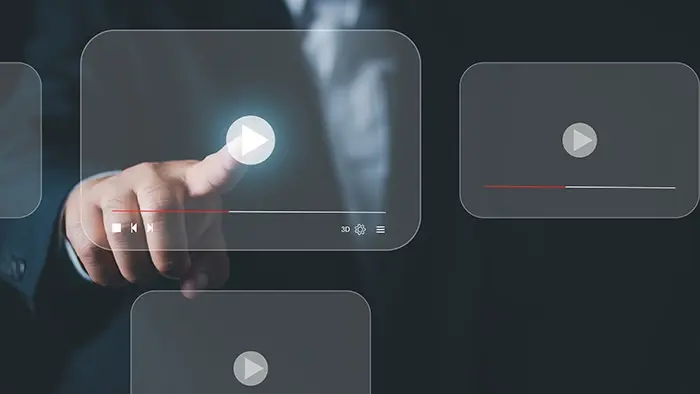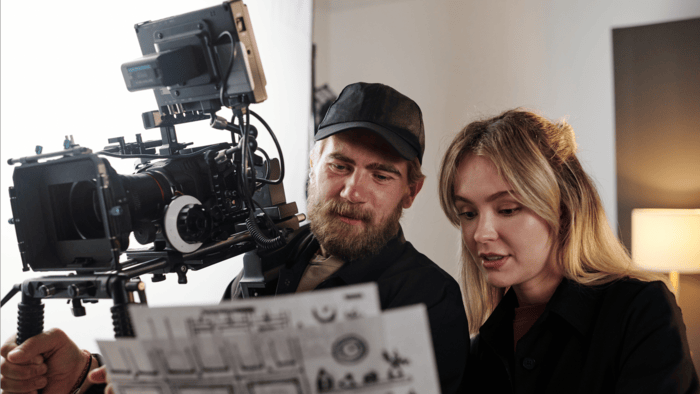Getting the Most Out of Your Video: Distribution Best Practices
You’ve wrapped a video project, the final file’s in your inbox, and it looks fantastic. But now what?
3 min read
 Ed Heil
:
August 06, 2025
Ed Heil
:
August 06, 2025
Professionally produced videos are critical when creating polished, strategic content that represents your brand. But sometimes the most compelling moments happen when the expensive cameras aren't rolling and it's where user-generated content (UGC) can provide perspective that really connects.
Whether it's a family member capturing a heartfelt moment during a hospital visit for your nonprofit's fundraising video, or an employee documenting their actual workday for a recruiting campaign, UGC adds authenticity that scripted content simply can't match. It gives viewers that "inside look" that makes them feel connected to your story.
The challenge? Most people aren't videographers. The good news? You don't need to be! Here are some Do’s and Don’ts on how to capture video that's good enough to seamlessly integrate with professionally produced content, and save a little dough along the way!
DO set up your phone correctly before you start. Turn on grid lines in your camera settings—they'll help you keep shots level and properly composed. Set your video quality to the highest available setting (usually 4K if your phone supports it). If your phone has HDR video, use it for better color and exposure balance.
DO shoot horizontally for most content. Unless you're specifically creating content for Instagram Stories or TikTok, horizontal footage integrates much better with professional video content. Your video production team will thank you.
DO hold your shots much longer than feels natural. This isn't photography—you need sustained footage. Hold each shot for at least 10-15 seconds, even if it feels awkwardly long. Kinda like a haircut, it's easier to trim footage than to stretch insufficient content.
DO keep your phone steady. Brace your elbows against your body or lean against a wall. If possible, use both hands to hold your phone. The goal is footage that won't make viewers seasick.
DO position yourself at eye level with your subject. Whether interviewing someone or capturing action, eye-level shots feel more natural and engaging than looking up or down at your subject.
DON'T zoom rapidly in and out. Digital zoom on phones often reduces quality, and rapid zooming is jarring for viewers. Instead, physically move closer or farther from your subject.
DON'T accidentally cover your phone's microphone. Most people hold their phones in ways that block the built-in mic. Be conscious of where your fingers are positioned.
DON'T rely on your phone's built-in stabilization to fix shaky footage. While helpful, it's not magic. Steady hands and proper technique goes a long way.
DO invest in a simple Bluetooth microphone if you're capturing interviews. Options from companies like DJI, Rode, and others can dramatically improve audio quality without breaking the budget. Even a $50 wireless mic will outperform your phone's built-in microphone.
DO record in quiet environments whenever possible. Background noise that seems minor in person can be overwhelming in recorded footage. Step away from busy streets, HVAC systems, and chattering crowds, especially if you’re using your phone microphone.
DO get closer to your subject when recording interviews. Audio quality improves significantly when you're 3-4 feet away rather than 10 feet away.
DO test your audio before important moments. Record a few seconds and play it back with headphones to check levels and clarity.
DON'T ignore wind noise for outdoor recordings. Even a light breeze can create unusable audio. Position subjects with their backs to the wind, or use your body as a windbreak. Some phone cases or simple windscreens can help too.
DON'T assume you can "fix it in post." Bad audio is much harder to rescue than imperfect video. If the audio is unusable, the footage probably is too.
DON'T position your subject in front of bright windows or daylight. This creates silhouettes and makes faces nearly impossible to see properly. Instead, position windows to the side or behind you as the camera operator.
DO look for even, soft lighting. Open shade outdoors or areas with large windows providing indirect light work beautifully. Avoid harsh overhead lighting that creates unflattering shadows under eyes.
DO use simple lighting solutions when natural light isn't available. Even a basic ring light or positioning a desk lamp to bounce light off a white wall can dramatically improve your footage quality.
For recruiting videos, have employees capture genuine moments during their workday—the morning team huddle, collaboration on a project, or even the walk from the parking lot. These authentic glimpses into company culture are more compelling than any scripted testimonial.
For healthcare or nonprofit work, family members can capture emotional moments that professional crews might not have access to—a patient's first steps after surgery, or the joy when a scholarship recipient gets their acceptance letter.
For manufacturing or service businesses, employees can document processes, safety protocols, or customer interactions that showcase your operational excellence.
The goal isn't to replace professional video production—it's to enhance it with authentic moments that scripted content can't replicate. When done thoughtfully, UGC doesn't look amateur; it looks real. And in a world full of polished corporate content, “real” stands out. Just remember: good UGC starts with good technique, even when you're using just your phone.

You’ve wrapped a video project, the final file’s in your inbox, and it looks fantastic. But now what?

Everyone's mesmerized by what AI can do with video. Generate scenes from text prompts. Swap backgrounds. Clone voices. Edit footage in seconds...

So, I recently wrote a blog about opening your video with your logo and I may or may not have ruffled some feathers. If you missed it, here it is....